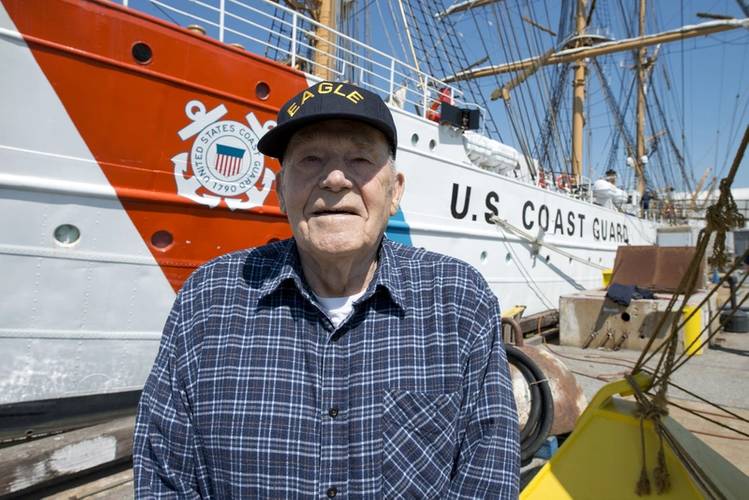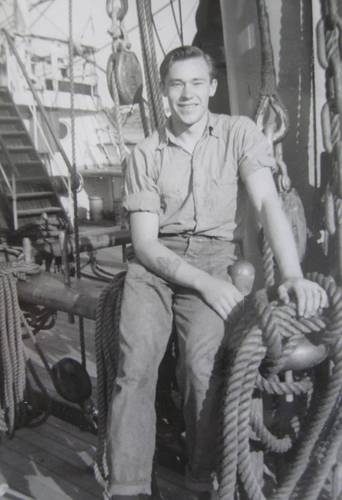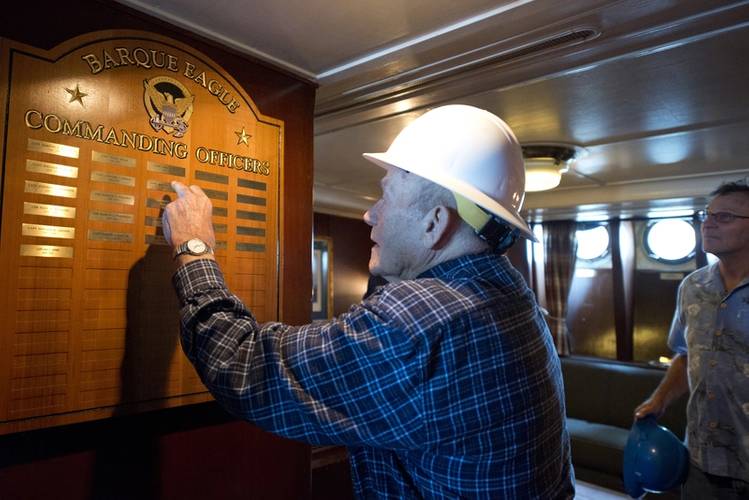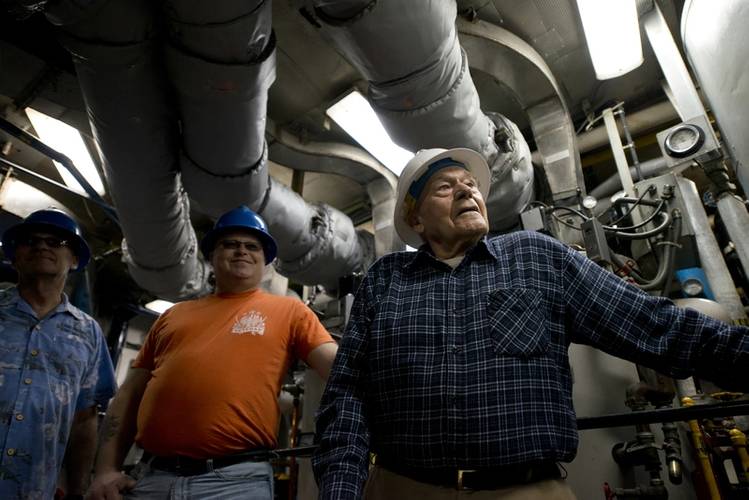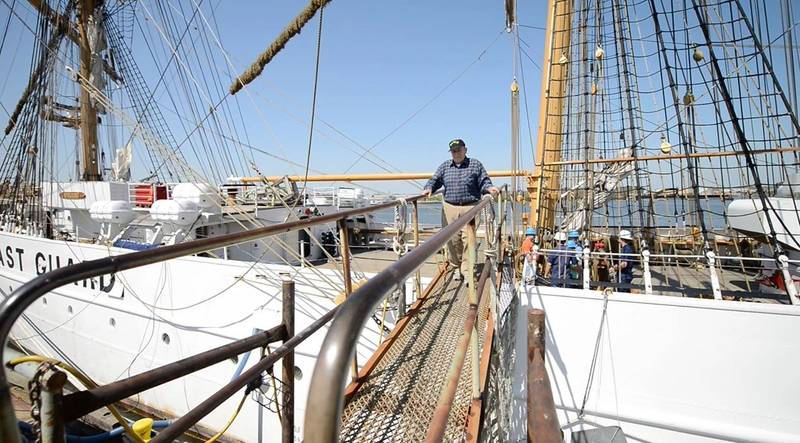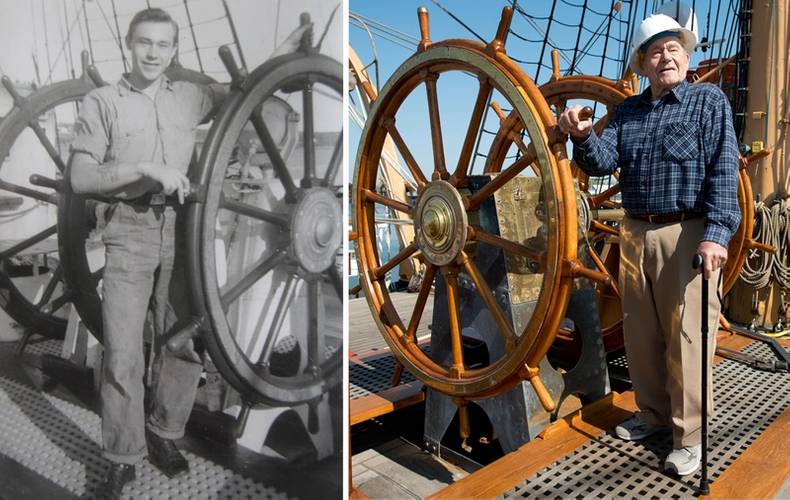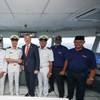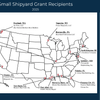In 1950, International Falls, Minn., native Jim Briggs, shook hands with his fellow crewmembers and stepped off the Coast Guard Cutter Eagle with his seabag packed to the brim and strewn across his back. It would be 66 years until he returned.
“They told me I always had a home there, and I could always come back,” Briggs said.
The Eagle was built in 1936 by Blohm and Voss Shipyard in Hamburg, Germany, and commissioned as Horst Wessel. At the end of World War II, the ship was taken by the U.S. as a war prize and renamed Eagle. In 1946, a U.S. Coast Guard crew, aided by the German crew still aboard, sailed the ship to its new homeport in New London, Conn., where Briggs would report aboard the following year.
Thanks to Briggs’ children, he was finally able to come back to the ship for a visit in April, while the Eagle was moored in Baltimore, its temporary homeport.
“Visiting the Eagle again has been on his bucket list forever,” said Sandra McCormack, Briggs’ daughter. “He talks about the Eagle all the time. He has so many stories, and I still don’t think we’ve heard them all yet.”
Briggs’ Coast Guard career began when he shipped out to boot camp in Mayport, Fla., in 1947.
“It was supposed to be 12 weeks long, but they were short on Coast Guardsman, so boot camp was only three weeks, followed by one week of mess-cooking,” Briggs said.
“I had done well on my aptitude tests and I got my choice of schools,” Briggs said. “I wanted to be a flight engineer, so they shipped me over to the airport in Mayport. I flew on a PBY Catalina as an observer on coastal patrol for a few months until they sent me to the naval base in Jacksonville for my flight physical.”
Briggs failed his flight physical because of a heart murmur, and was sent back to boot camp to await further instruction. Soon enough, Coast Guard Cutter Campbell pulled into port and picked up nearly 100 recruits, and Briggs’ name was amongst those called for duty.
Once Campbell arrived in Connecticut, the crew dropped anchor in the mouth of the Thames River. A cruiser from the Coast Guard Academy met the ship and picked up recruits. Briggs thought he was going to school.
Briggs said one of his crewmembers jokingly pointed at the Eagle moored at the Academy and said, “There’s your ship over there,” to which Briggs responded with, “Yeah right! That’s a sailing ship!”
The joke was over when Briggs and 10 other recruits boarded Eagle.
Because of his fear of heights, Briggs remembered his first day aboard the Eagle as clear as glass. All of the newly reported crewmembers were required to learn how to climb the mast. The first day, they climbed up to the first stage and then back down the other side. When they were done, his supervisor asked for a volunteer to be a motor machinist’s mate, but Briggs wasn’t fast enough. Someone’s hand shot up before his.
“The next day, we climbed to the second stage and back down,” Briggs said. “Climbing still wasn’t for me. That day, they called for an electrician striker, and I raised my hand right away. I went into the electric crew after that.”
Because the Eagle was still new to the United States, the ship was covered in German writing, including all of the ship’s manuals. Once the English manuals were printed, Briggs helped turn them into books.
“That was quite a day,” Briggs said. “I’d pick up one sheet of paper out of about 200 stacks of paper and staple them all together. That was one manual. Then, we’d have to go make another one and start over again.”
During his free time underway, Briggs said he sun-tanned on the deck and watched a lot of movies.
“As an electrician, I got to be the operator of the projector,” Briggs said. “I had a Connecticut driver’s license, so I would have to go pick up movies and bring them back the ship and show the movies to the rest of the crew.”
One of Briggs’ favorite jobs during his time on the Eagle was to stand by the cooks while they made ice cream.
“I had lots of ice cream underway,” Briggs said. “Whenever the cooks made ice cream, they’d always blow fuses out. They had to have an electrician to put in new fuses all the time. I made good friends with the cooks.”
Though Briggs did not leave with a belly full of ice cream after his recent visit to the Eagle, he left with a full heart. He and three of his six children were given a full tour of the ship to see all of the changes made since his time aboard, including the engine room where he spent most of his early days on the Eagle.
“The ship is a lot different than what I remember,” Briggs said. “This brought back a lot of memories. It was a good day.”
At the end of the visit, Briggs’ daughter was in tears.
“He’s wanted to do this for a long time,” McCormack said. “It means the world to him. We are all so happy to be a part of the last thing on his bucket list. We’ll never forget the smile the Coast Guard brings to his face.”
The Author
Jasmine Mieszala is Petty Officer 3rd Class, U.S. Coast Guard










